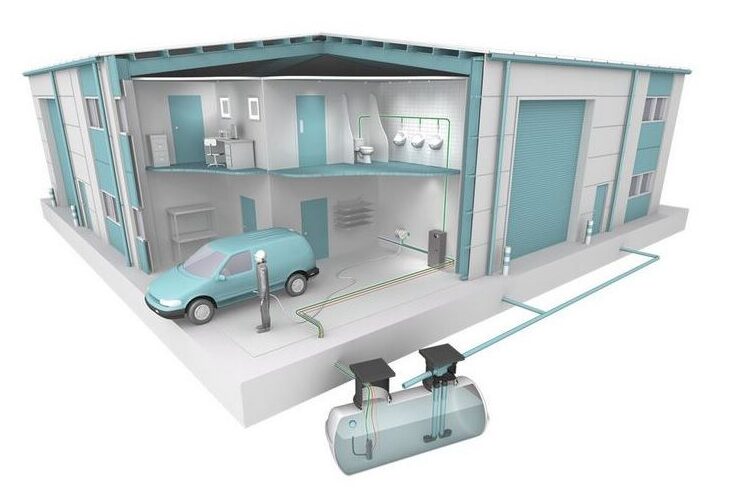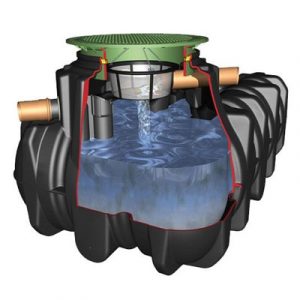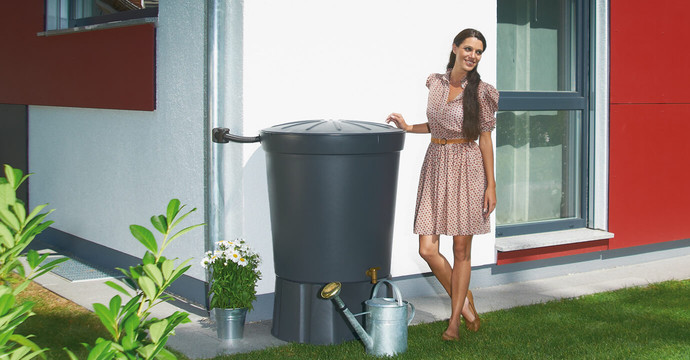Rainwater harvesting is becoming tremendously popular – and with good reason.
The thing is:
As weather patterns continue to change rapidly and UK weather is less and less predictable, rain water harvesting is one of the best ways homeowners can stay ahead of the curve.
There are quite a few questions, though:
What is rainwater harvesting?
And how does rainwater harvesting work exactly?
You’ve come to the right place!
At Drainage Superstore, we’re convinced that water harvesting systems are key to a more sustainable future.
We’ll show you how they work and why you should invest in one.
Read on.
Table of contents:
- What is rainwater harvesting?
- How does a rainwater harvesting tank work?
- The importance of rainwater harvesting
What is rainwater harvesting?
Rainwater harvesting, also known as rainwater recycling, is the process of collecting rainwater and using it for a wide variety of purposes – from flushing your toilet to watering your garden.
Let’s face it:
It rains a lot in the UK, and we love to complain about that. But all that rainwater is essentially a free resource that goes to waste!
Enter water harvesting with its many benefits.
Check this out:
Rainwater is soft water, so there’s no limescale build-up that can wreak havoc on your pipes and washing machines. While it’s not potable, rainwater collected from a water harvesting system is suitable for multiple uses and can help reduce your water bills by as much as 50%!
After all, why waste mains water irrigating your garden during a dry period if you can utilise nature’s bounty?
The principal uses of rainwater are:
- Toilets – ca. 35% water use
- Washing machines – ca. 15% water use
- Garden – ca. 5% water use
How does a rainwater harvesting tank work?

Your typical underground rainwater harvesting tank, designed to British Standards BS EN 16941-1:2018 On-site non-potable water systems. Systems for the use of rainwater should come complete with pipes, a submersible pump, filter(s) and mains backup.
Now:
The main rainwater collection area is your roof. Assuming you’ve chosen the right size rainwater collection system for your needs and installed it properly, rainwater will flow from the guttering through the pipework and into the tank.
A filter will then stop any dirt, debris and leaves from entering the tank, while a control unit will keep track of the current water level and, possibly, water temperature.
Next:
A pump will send the harvested water to a designated indoor or outdoor location on demand via the pipework. If you happen to run dry due to an unusually long drought, the mains backup will have your back.
It’s that simple, really!
The importance of rainwater harvesting

Water harvesting is the next big thing. And we need it now more than ever.
Here’s why:
At 348 litres daily water used per capita, we in the UK use more water on average than many of our close neighbours, such as Denmark (318) and Luxembourg (208), among others.
So, the more use we can make of our rainwater with the help of a state-of-the-art rain harvesting system, the more sustainable our households are going to be in the years to come.
Bottom line:
Now that you know what is rainwater harvesting and all its ins and outs, you’ll have no trouble answering the question of how does rainwater harvesting work and why it’s vital.
And that’s why we all love rain!










